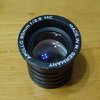Mercervillerental wrote:
Would you all reload either or both of the last 2 cases in my original post?
When I begin to prepare by brass, I clean it with a weak acid solution and detergent and after it dries, I make sure to put hands and eyes on every case.
Minor scratches and dents will not stop me from reloading a case.
- A scratch, dent or gouge like that in your case #2 would not stop me from reloading the case as the neck is supported by the chamber during firing and the scratch should not materially impact it's ability to function as a gas seal. The case will probably suffer a premature failure at the scratch, dent, gouge, but neck splits are not a catastrophic failure, plus read more below.
- A nick or chip like in your case #3 would also not stop me from reloading the case for much the same reason as case #2, plus the defect may be smoothed out during the resizing process. Again, read more below.



